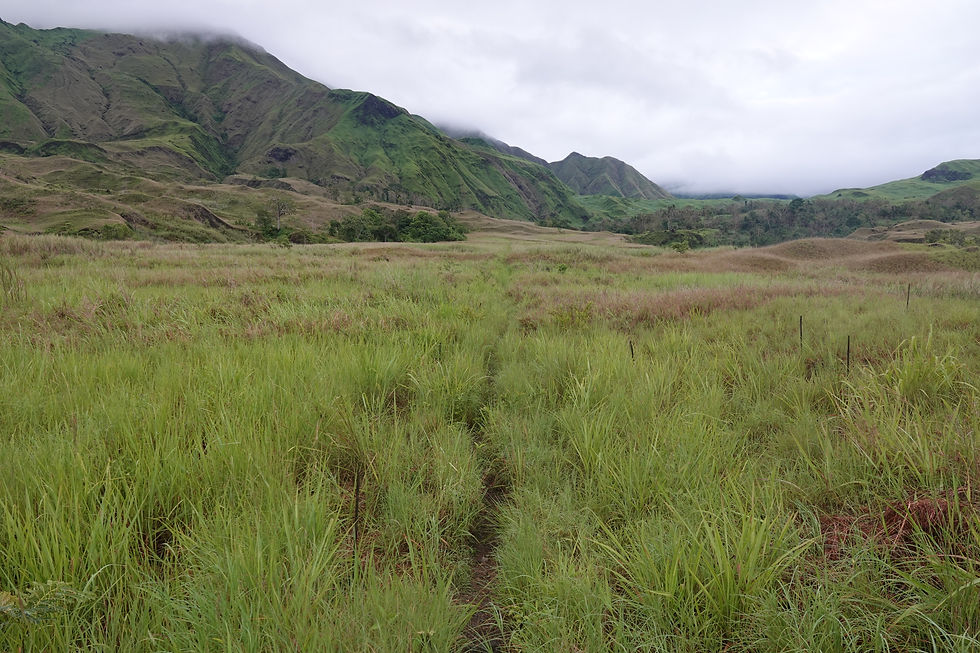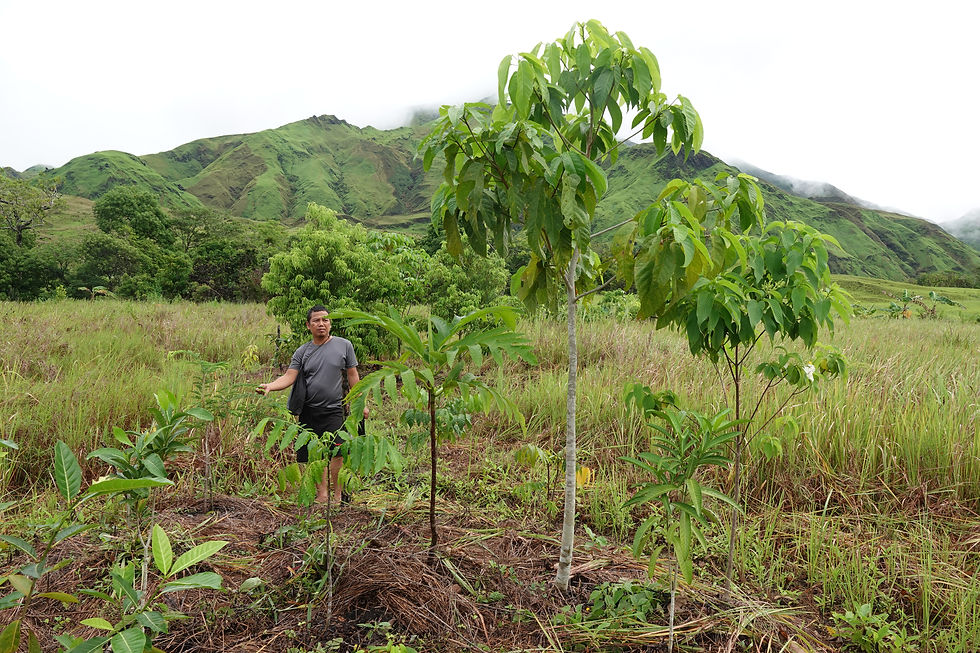Monitoring progress of habitat restoration experiment using permaculture techniques
- Emmanuel d'Aboville
- Jun 20, 2025
- 2 min read

The first photo shows the Landing area taken on May 29, 2022. The area is called Landing because it was formerly an airstrip for small planes of cattle ranchers. The cattle ranchers stopped operations in 1969. Since then, the area experienced fire almost every year; the condition of the soil was therefore very poor. Grassland burning is a key strategy in ranch management, and somehow got embedded in local practices.
The area is part of the ancestral domain of the Taobuid. It is also part of the Mounts Iglit-Baco Natural Park (MIBNP). In the second half of 2022, after local consultations with the Taobuid, and in partnership with the MIBNP Protected Area Management Office, we divided the area into three sections: a two-hectare control area, another two-hectare “with-intervention” area, and a food forest area. These areas correspond to zones 3, 4, and 5 in permaculture.
We monitored the survival and growth of seedlings that were naturally dispersed in the control area. We also monitored the performance of the seedlings in the “with-intervention” area. The interventions consisted of creating mounds filled with biomass (decaying logs, banana trunks, and falling leaves around the area), the creation of swales around mounds to help retain water, mulching, and ringweeding. Non-invasive naturally growing vegetation on the mounts were also left standing to help decrease the temperature for the tree seedlings on the mounds. The tree seedlings were either outplanted, came with the biomass that was added to the mounds, or were naturally dispersed. A firebreak was also created in one corner of the area that is adjacent to other territories.
While they allowed us to do the experiment, the residing Taobuid in the area were skeptical that we would produce good results; they thought nothing would grow in such poor soil condition. They, however, believed that if left undisturbed the area will regenerate on its own but it will take a very long time.
After three years, as shown in the other photos, a significant number of seedlings on the mounds survived three long dry seasons in this part of the island, compared to the control area. This proves that addition of biomass, use of swales, mulching, and ringweeding works. And even the skeptical Taobuid were impressed with the results and are now contributing wildlings they collected in their territories to be added to and planted in the Landing area.
We are continuing to document, monitor, and learn from this experiment and we hope that we can apply the learning in other parts of the park to benefit the Taobuid, wildlife, and the tamaraw.
Watch out for the video of this experience in DAF’s Youtube Channel.
This activity is supported by the Biodiversity Challenge Funds through the Darwin Initiative under UK Aid for the Thriving Together with Tamaraw Project, in partnership with the Philippine Permaculture Association, and Mindoro Biodiversity, led by Re:wild.







Comments